2. Drone Calculator
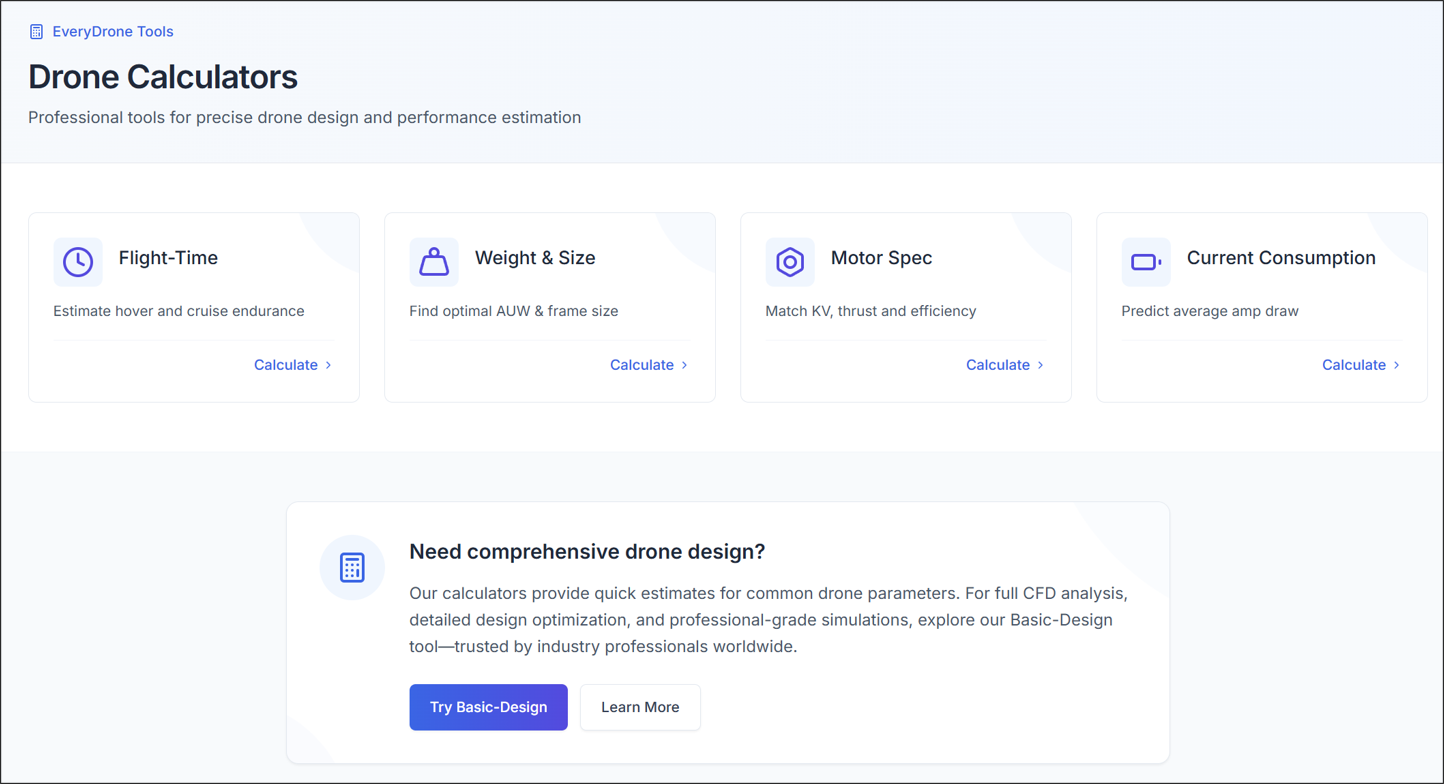
Drone Calculator is a tool designed to estimate drone performance based on user-provided input parameters. It offers the following key functions:
- Flight Time: Estimates optimal flight duration based on drone total weight, battery capacity, voltage, and other relevant factors.
- Weight & Size: Calculates the appropriate frame weight and size considering frame dimensions, payload, battery weight, and number of motors.
- Motor Specs: Determines the optimal motor specifications using factors such as AUW (All-Up Weight), thrust-to-weight ratio, and battery cell count.
- Current Consumption: Estimates the required battery capacity and expected flight time based on AUW, number of motors, voltage, and selected flight mode.
Each calculator includes a Quick Theory and a How It Works section. If you find it difficult to understand the calculator, refer to these sections first.
1. Flight Time
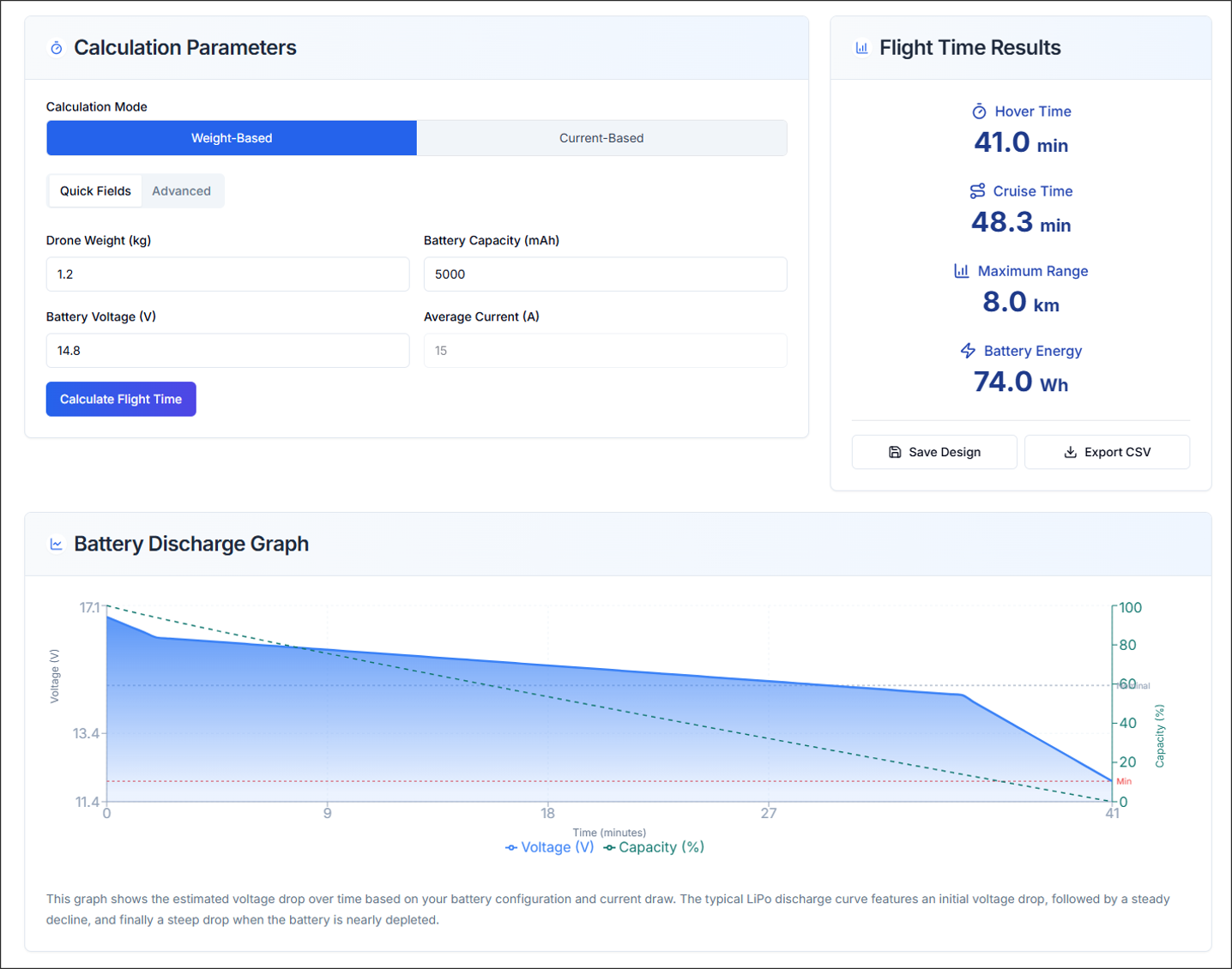
Flight time is related to the total weight of the drone, battery capacity and performance, as well as operating current. Detailed information is provided below.
1.1. Calculation Parameters
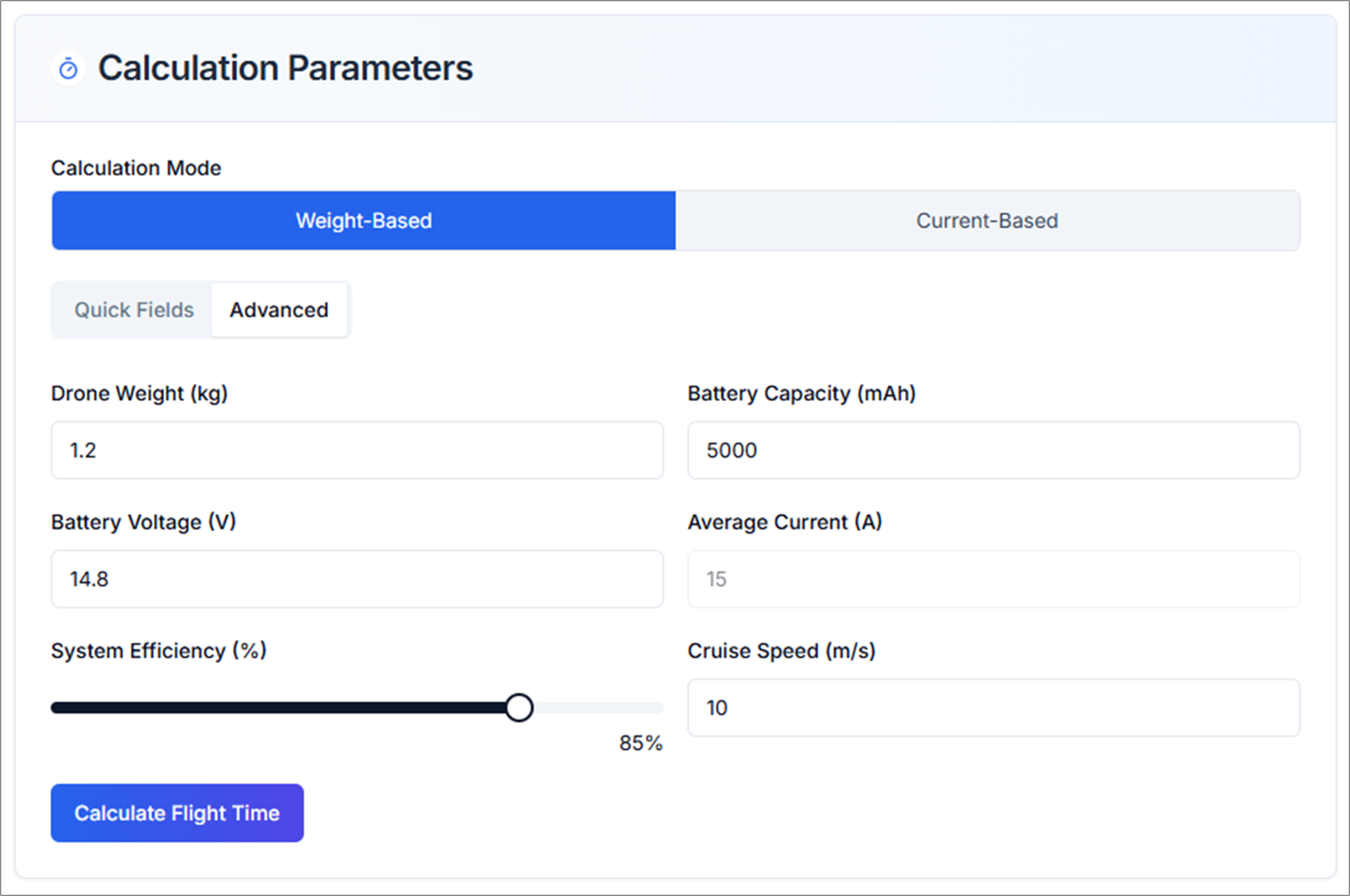
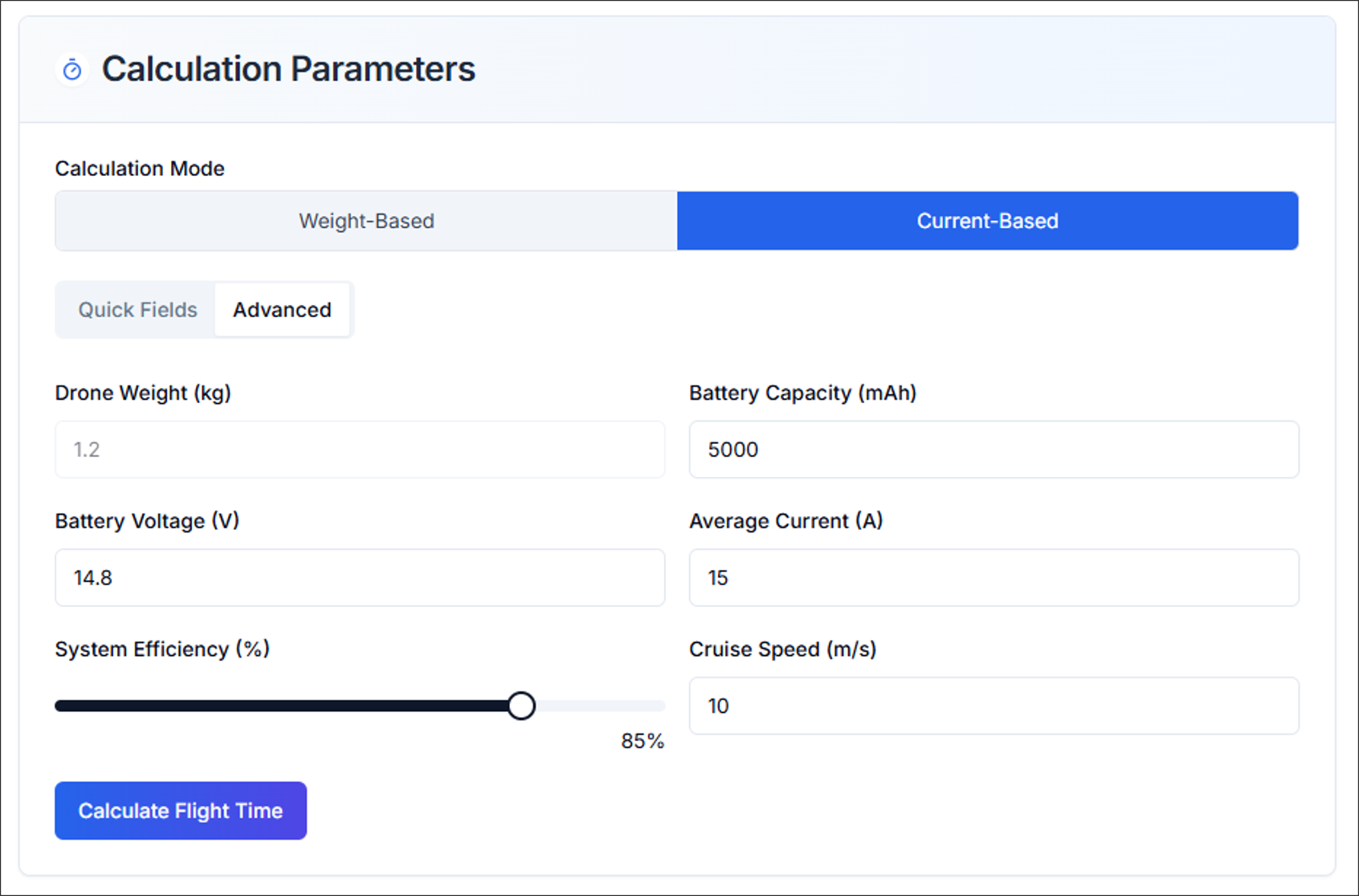
Weight-Based: Estimates the possible flight time based on the drone total weight and battery performance.
Current-Based: Provides more accurate estimates when actual operating current data is available.
The Advanced Option allows you to enter System Efficiency and Cruise Speed.
1.2. Flight Time Results
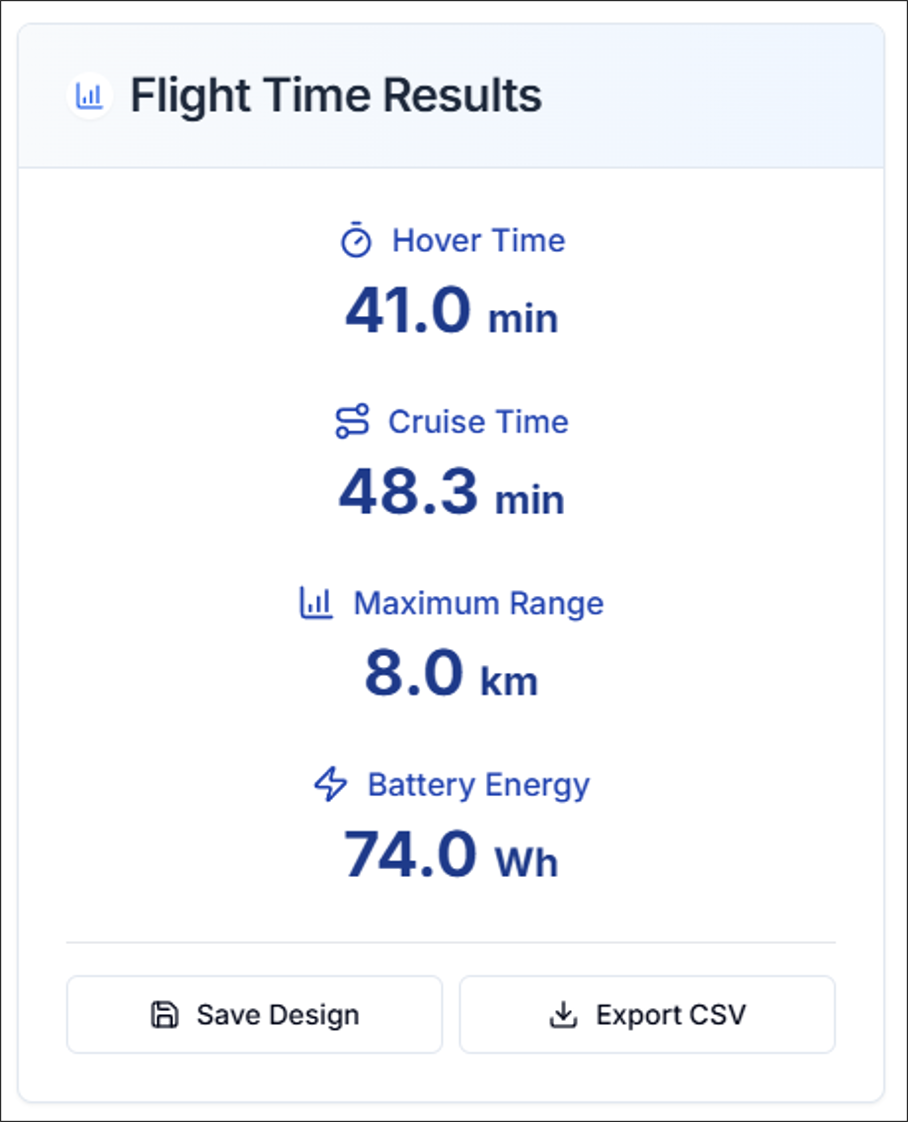
After entering the required values in Step 1.1 and clicking Calculate Flight Time, the result will be displayed immediately, as shown in the figure above.
At this point:
-
Hover Time: The duration the aircraft can stay airborne while hovering in place.
-
Cruise Time: The duration the aircraft can fly while maintaining a constant speed.
1.3. Battery Discharge Graph
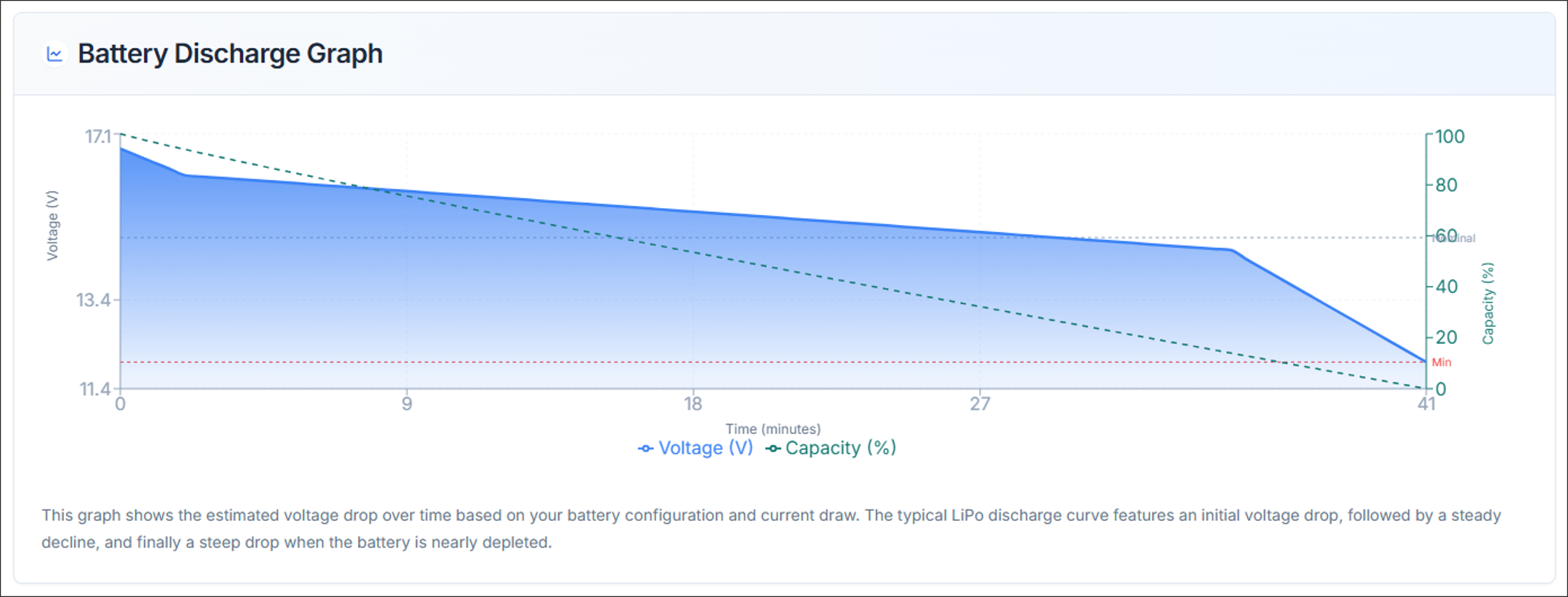
A discharge graph is generated based on the input battery, weight, or current data.
The battery is assumed to be a Li-Po(Lithium Polymer) type, and the graph is estimated using a maximum charge voltage of 4.2V per cell and a discharge limit of 3.0V per cell.
2. Weight & Size
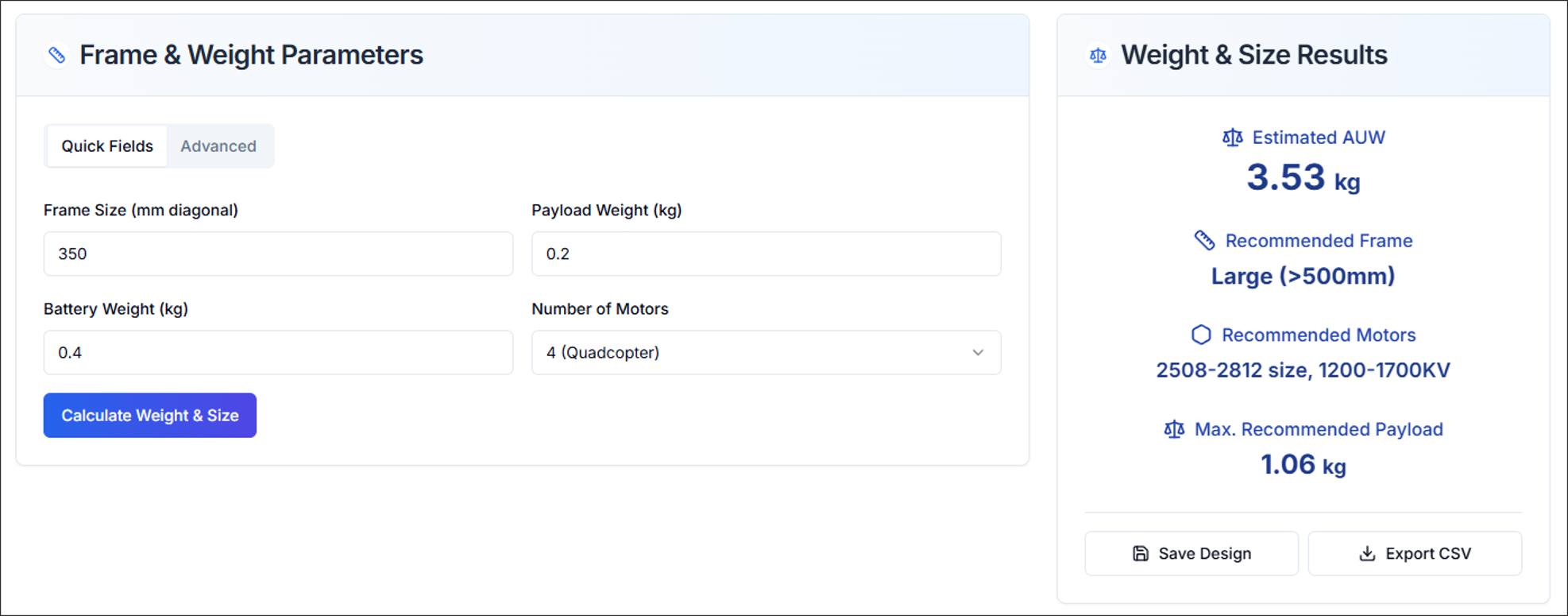
The Weight & Size evaluates whether the total weight and dimensions of frame are appropriate, based on the input weight and size information of the drone components. It also provides a recommended motor suitable for the given payload and frame specifications.
2.1. Frame & Weight Parameters
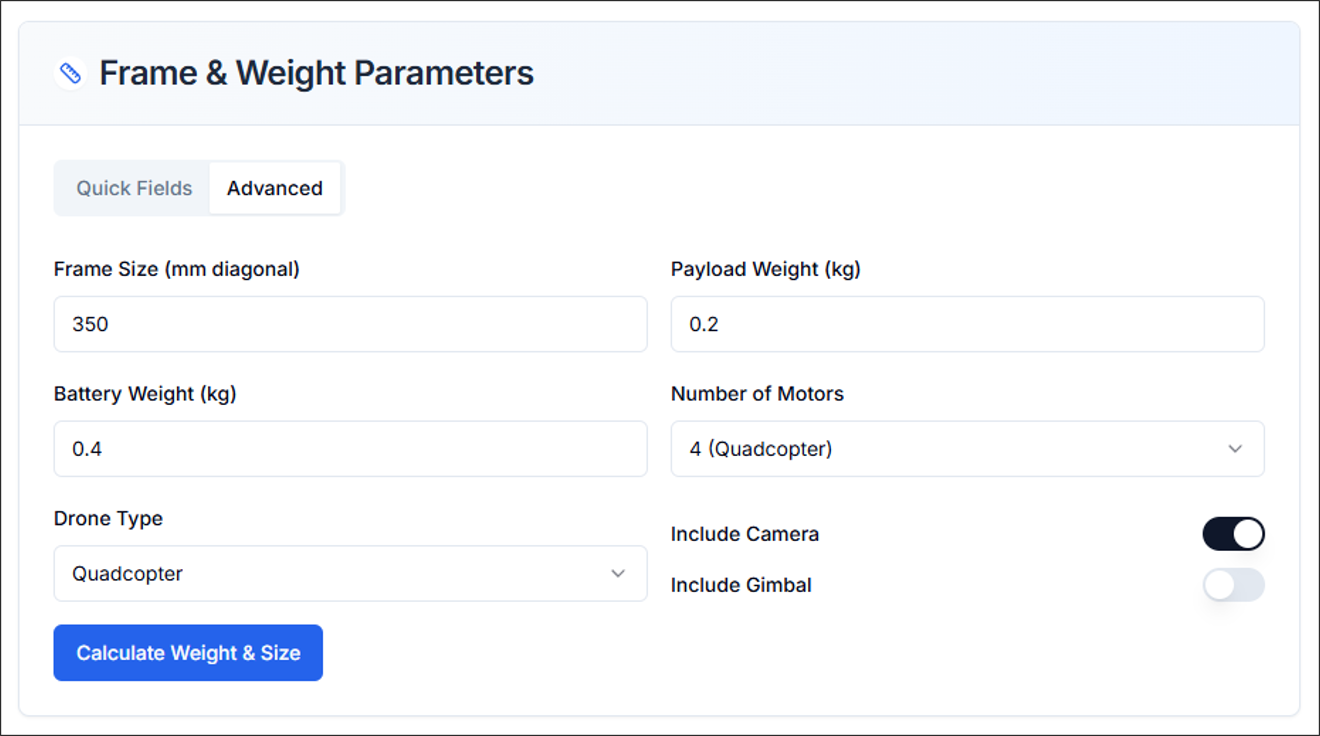
Enter the frame size, payload, battery weight, and number of motors.
If Advanced is selected, you can additionally specify the drone type and whether a camera/gimbal is included.
2.2. Weight & Size Results
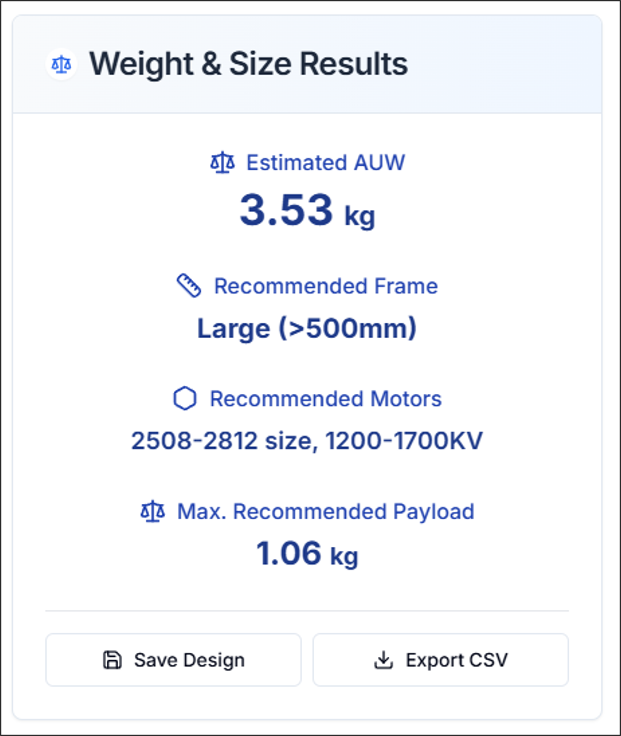
The calculator outputs the drone's Estimated AUW, recommended Frame, Motor, and Payload.
Here, AUW (All-Up Weight) refers to the total weight of the drone, including all components. Payload refers to the weight of equipment such as cargo or devices that the drone is designed to carry.
In the recommended motor specifications, values such as 2508 represent the motor's dimensions:
- First two digits(25): Diameter of motor
- Last two digits(08): Height of motor
Both values are measured in millimeters(mm).
3. Motor Spec
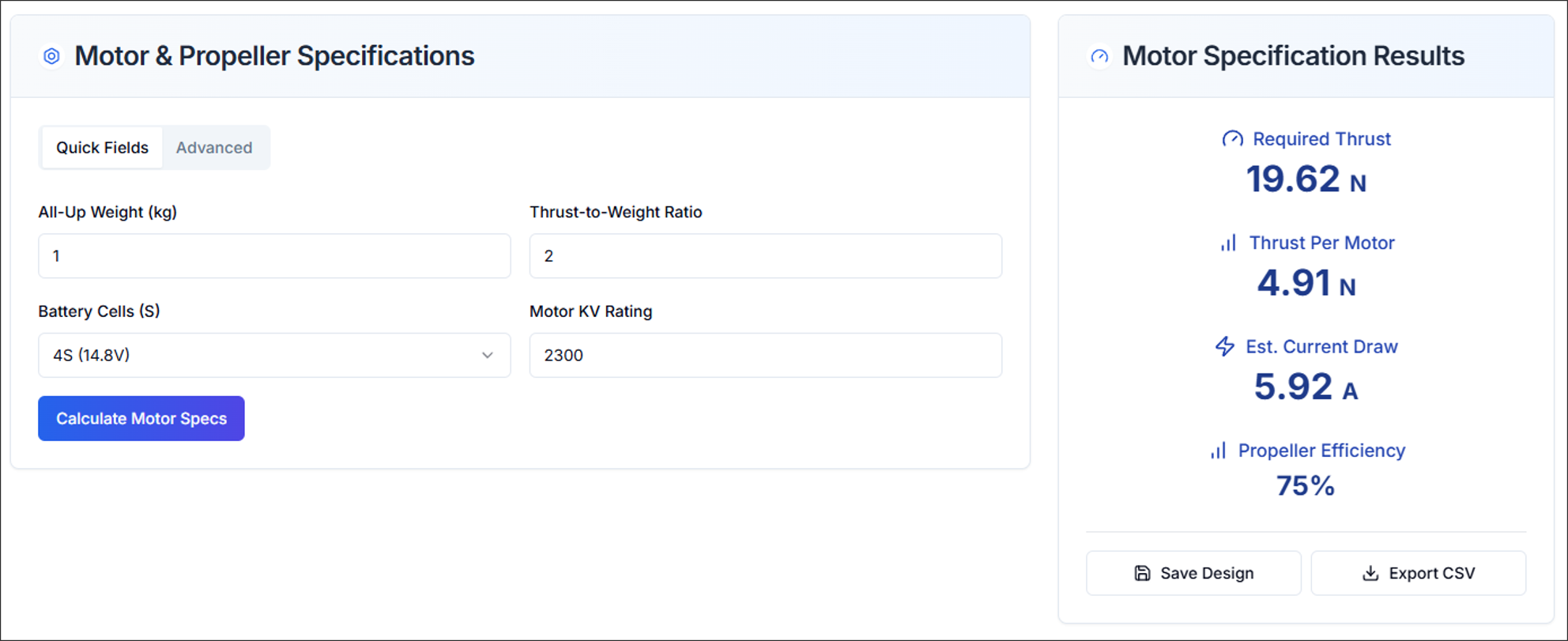
The Motor Spec determines whether the selected motor is appropriate for the drone configuration by calculating various performance indicators.
3.1. Motor Specification Parameters
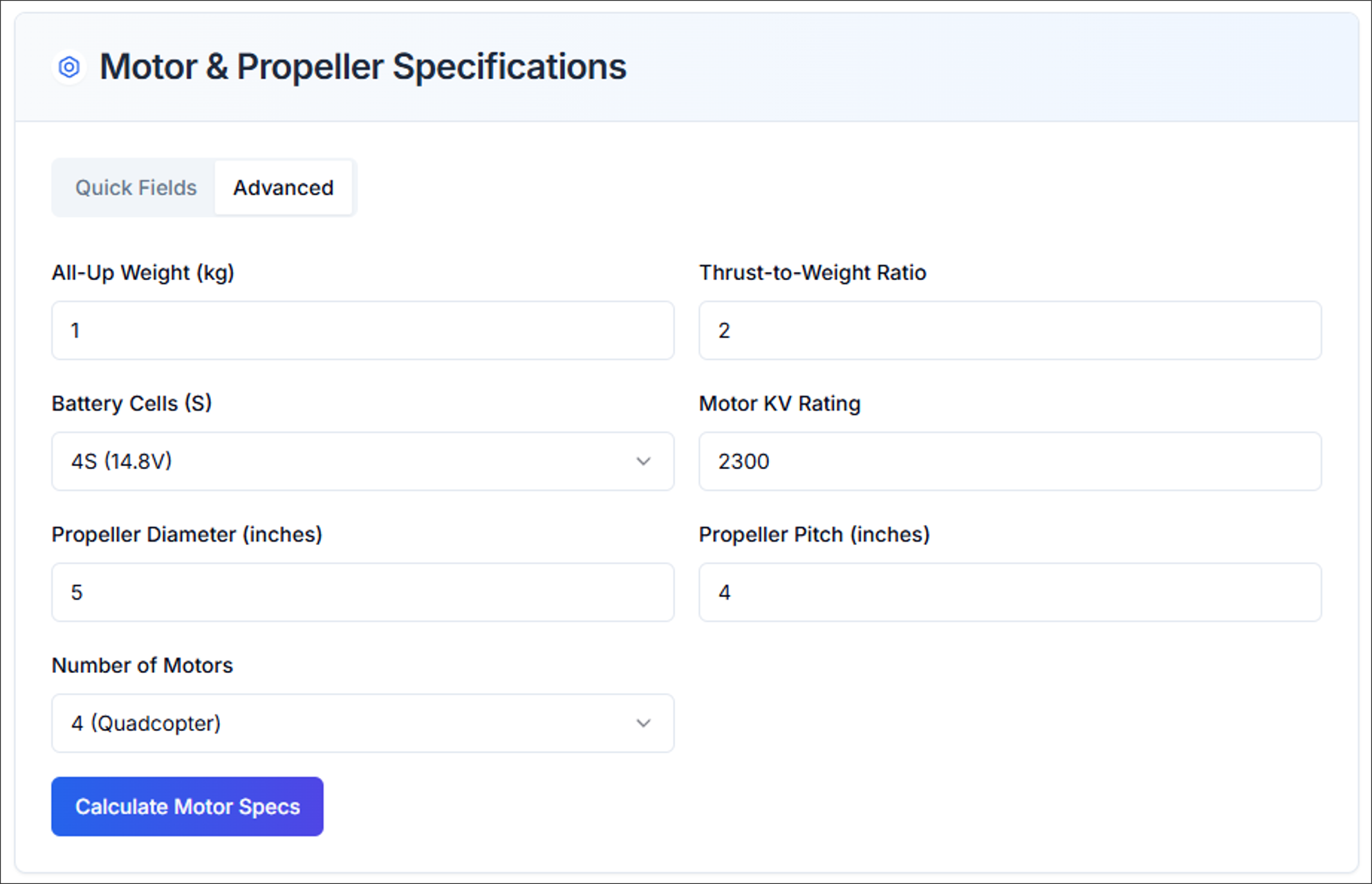
Enter the All-Up Weight(AUW), Thrust-to-Weight Ratio, Battery Cells, and Motor KV Rating.
If Advanced is selected, you can also specify the Propeller Diameter, Propeller Pitch, and Number of Motors.
3.2. Motor Specification Results
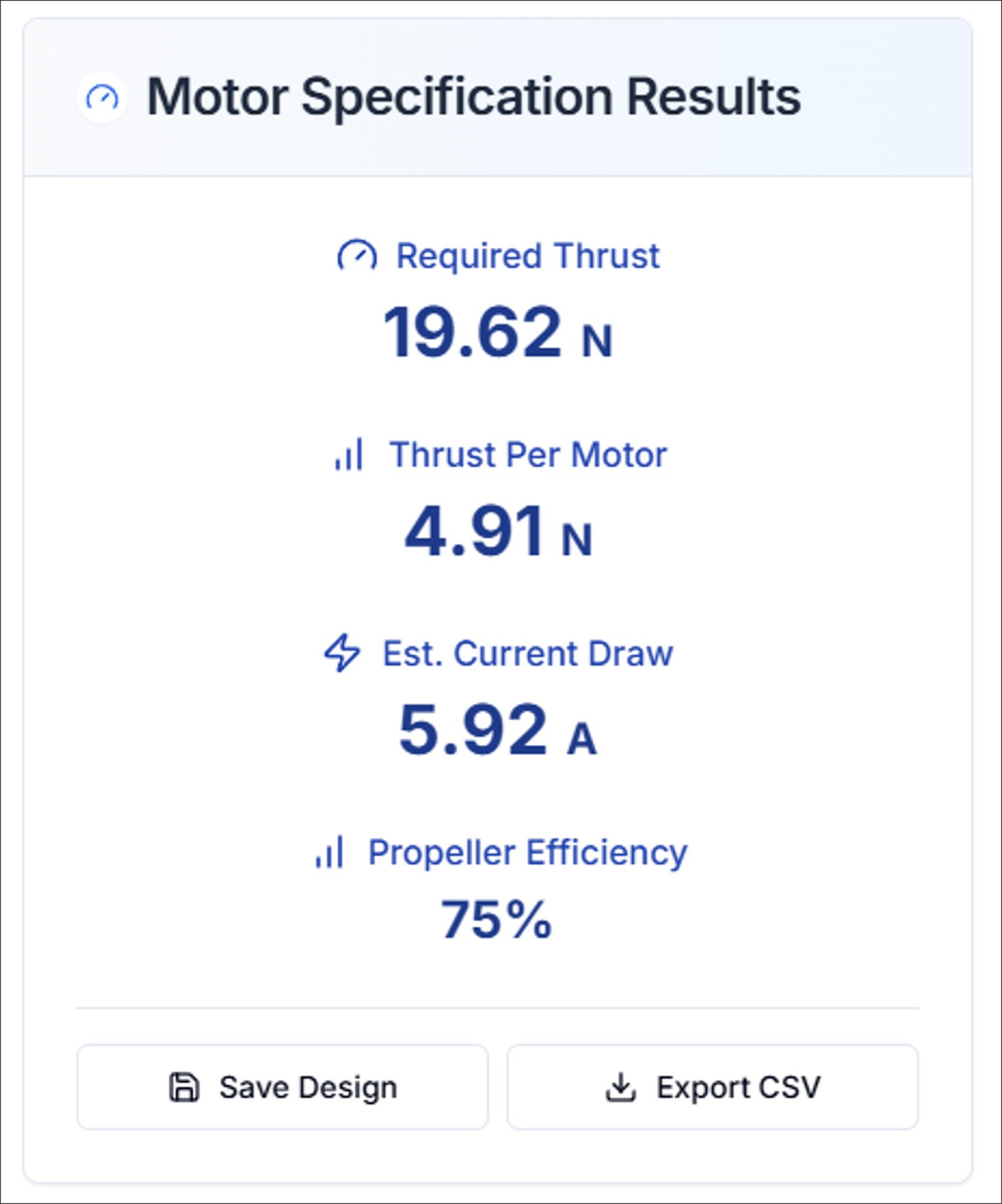
The calculator outputs the Required Thrust, Thrust Per Motor, Estimated Current Draw, and Propeller Efficiency.
4. Current Consumption
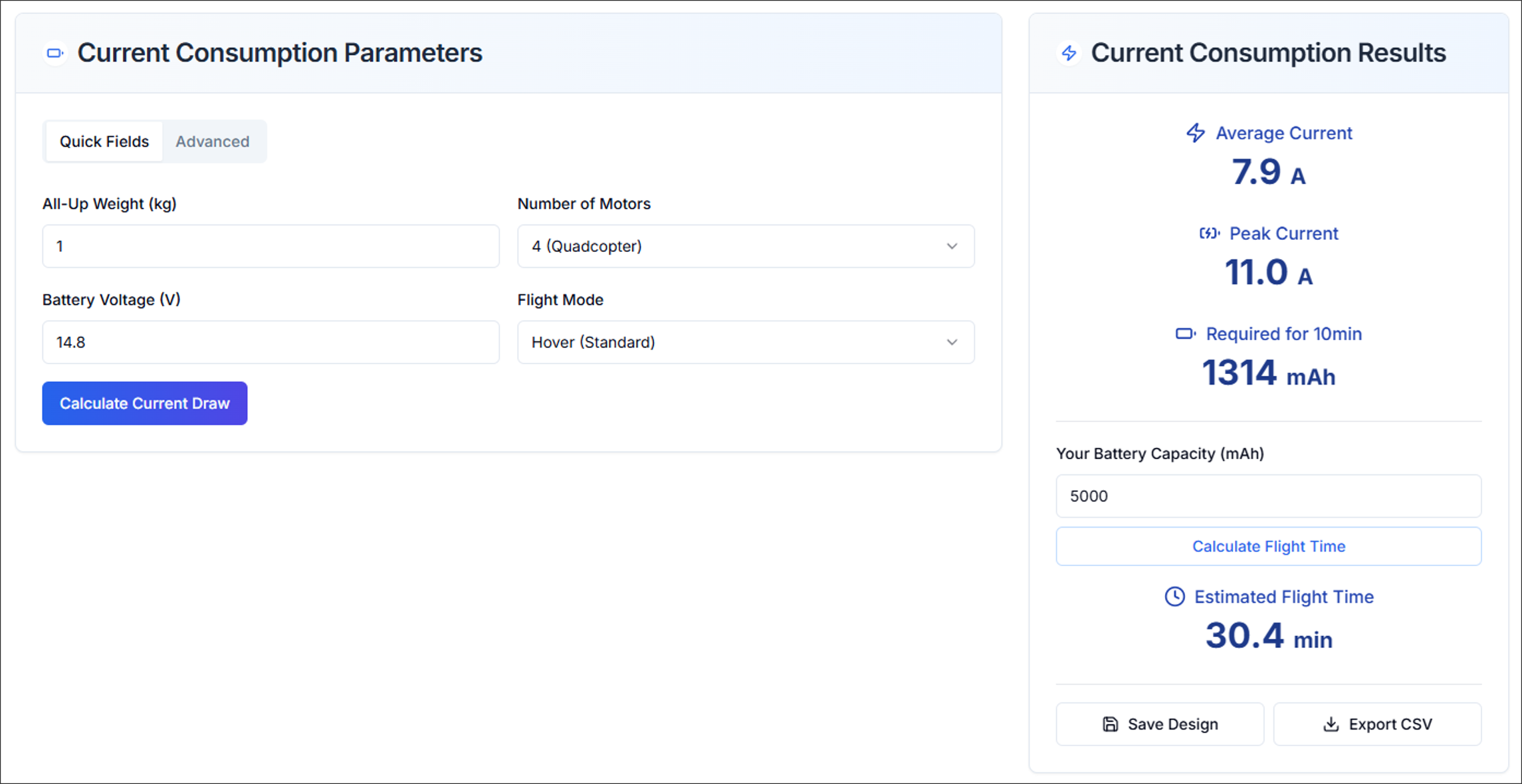
The Current Consumption estimates the current required by the drone based on total weight, number of motors, battery, and flight mode.
4.1. Current Consumption Parameters
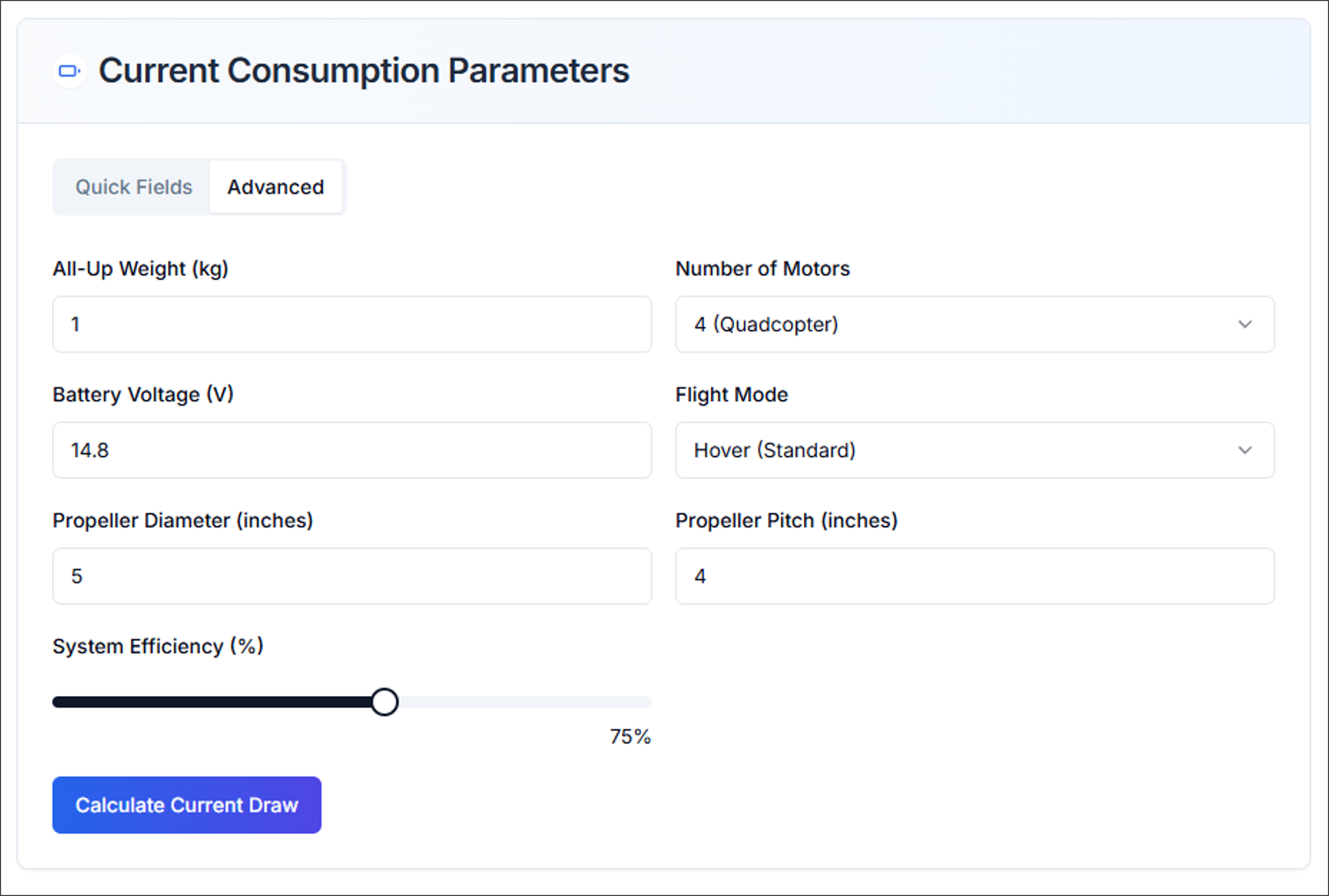
Enter the All-Up Weight(AUW), Motor Count, Battery Voltage, Flight Mode, Battery Capacity.
If Advanced is selected, you can also specify the Propeller Diameter, Propeller Pitch, and Number of Motors.
4.2. Current Consumption Results
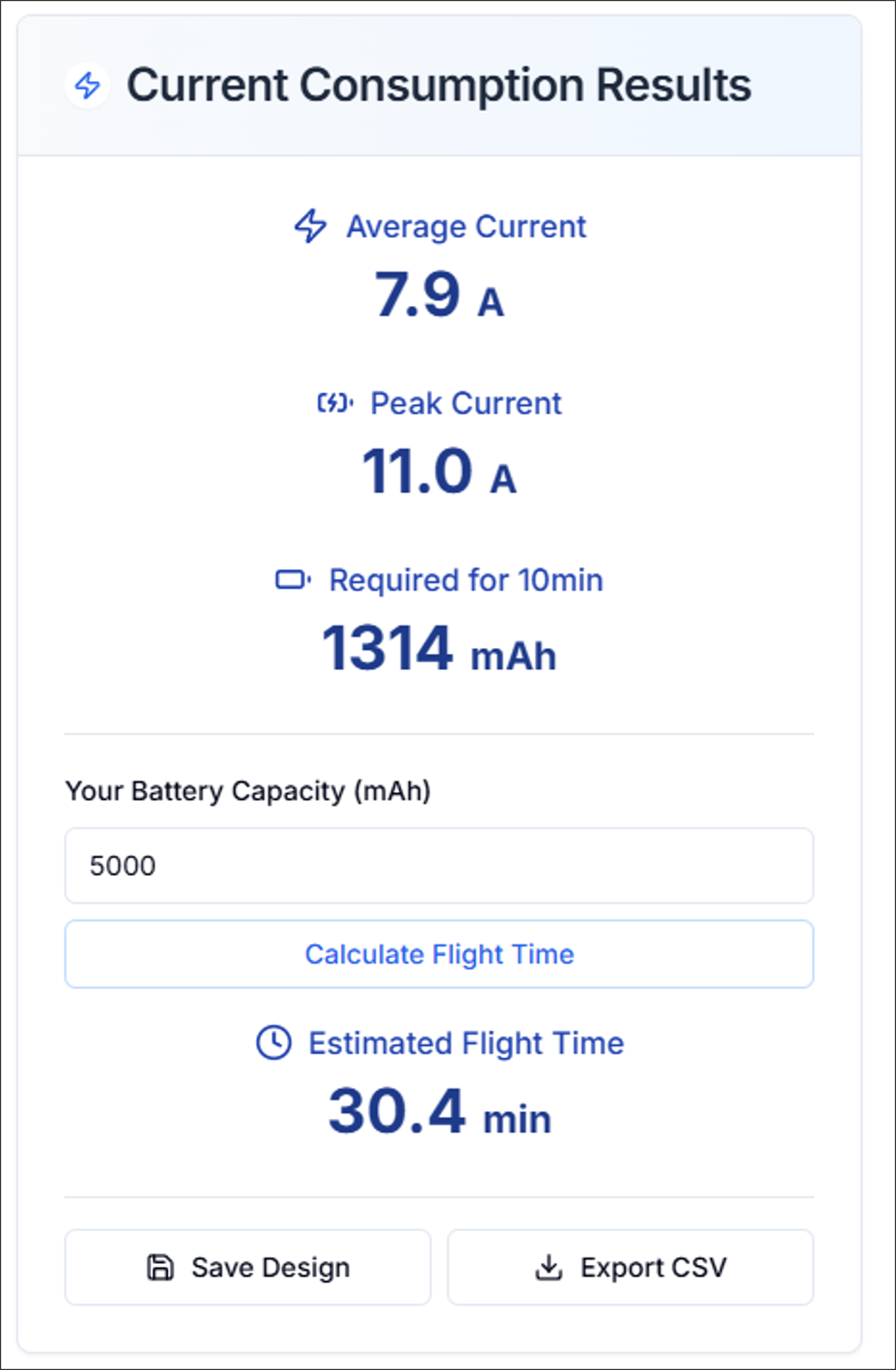
The calculator outputs the Average Current, Max Current, Estimated Flight Time.
The Estimated Flight Time is affected by the Battery Capacity entered by the user.
5. Feedback & Future Updates
-
Accuracy Updates: Refined formulas based on real-world flight data.
-
Interactive UI: A more guided workflow with step-by-step inputs and real-time preview of results.
We welcome your suggestions to improve the calculators or add new parameters.
Stay tuned for regular updates as we refine the Drone Calculator with more accurate formulas, better visuals, and tighter integration with the Advanced Simulation.
Need Assistance or Have Questions?
Frequently Asked Questions: FAQ Link
Support Inquiries: support@everysim.io